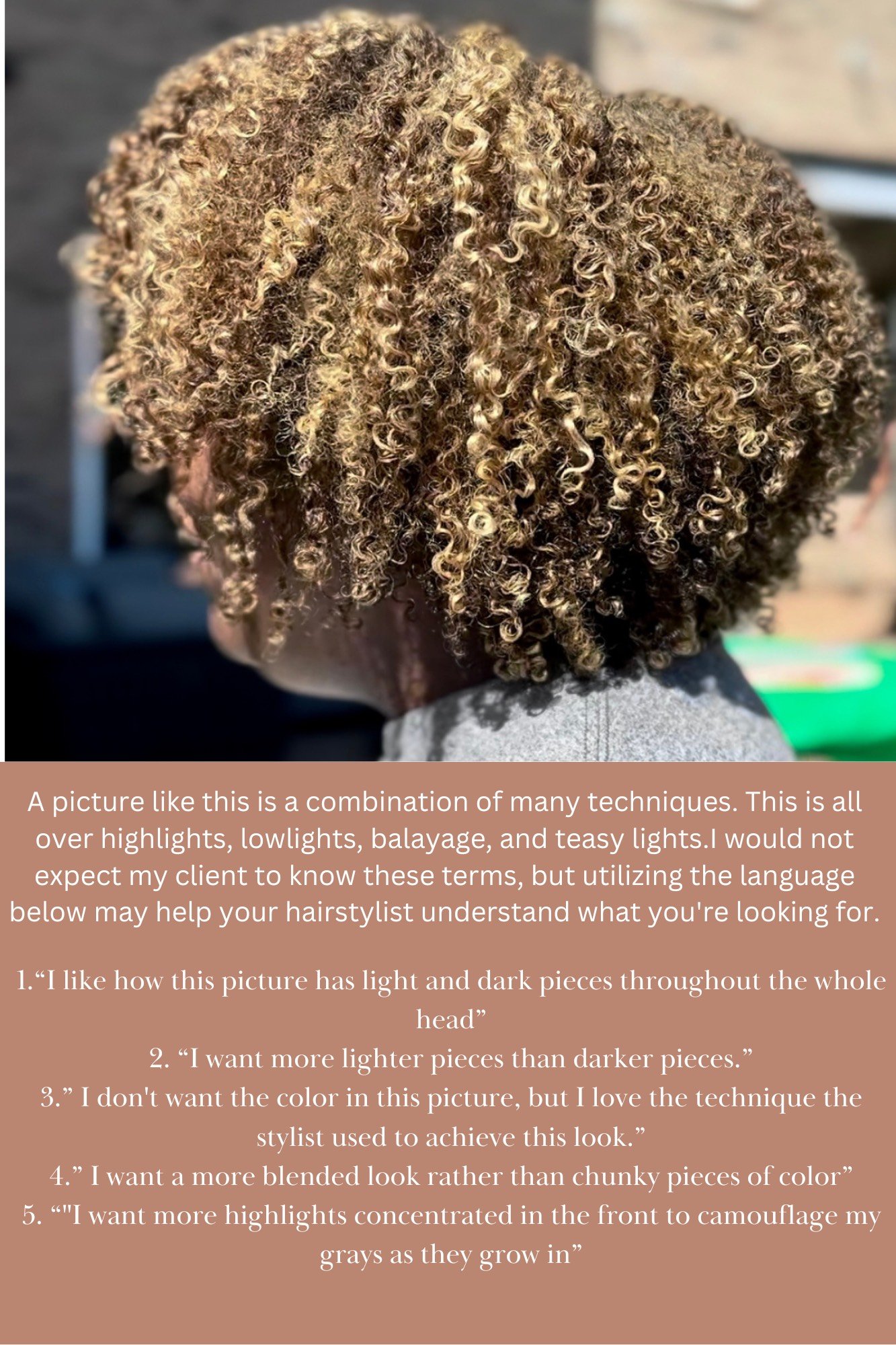Defining Hair Color Techniques for Type 4 Naturals
Styled by Sasha Earnest, Photo Credit: Michelle Dawn Photography
When it comes to coloring hair, navigating the terminology can be challenging for consumers. However, understanding these terms is essential for effectively communicating with your stylist and achieving your desired look. During consultations, it's crucial to provide examples of styles you admire, as this helps your stylist understand your preferences and pinpoint the techniques that catch your eye.
While it's not your responsibility to know the technicalities, doing some research beforehand can aid in expressing your desires clearly. Let's delve into some common hair color techniques: highlights, partial highlights, and lowlights.
Highlights
These strands of lightened hair add brightness and dimension to your overall look. Typically applied throughout the entire head, highlights vary in thickness, with thicker sections creating bolder effects and thinner ones offering more blended results. They are achieved through techniques like foiling or balayage, resulting in a sun-kissed appearance.
Partial Highlights
As the name suggests, partial highlights focus on highlighting only a portion of the hair, often the top and sides, leaving the bottom layers untouched. This technique is versatile and ideal for adding dimension and brightness without committing to a full head of highlights.
Lowlights
In contrast to highlights, lowlights are darker strands strategically added to create depth and richness. They complement highlights by providing contrast and texture, resulting in a natural, blended look. Lowlights are dispersed throughout the hair to break up a single hair color and add dimension.
It's important to communicate your preferences and expectations to your stylist, including your desired frequency of salon visits and any concerns such as gray hair or thinning. Remember that hairstylists are artists, each with their unique painting style.
Seek professionals whose work aligns with your aesthetic preferences, as technique plays a significant role in achieving your desired outcome. By understanding the differences between these techniques and discussing them with your stylist, you can work together to create a customized hair color that enhances your natural beauty.
This article was contributed by Sasha Earnest, a Color and Curl Specialist based in Raleigh, NC and the Owner of The Color and Curl CoLab, where the focus of is coloring curls with care.
Need help finding a colorist in your area? You can always browse My Style-List, a location-based directory created to help connect potential clients like you to qualified professionals. You can specifically filter by colorists to find and vet professionals for your next salon service.





